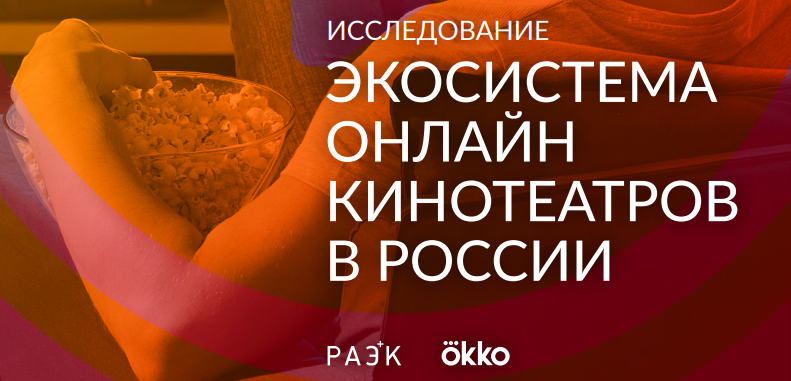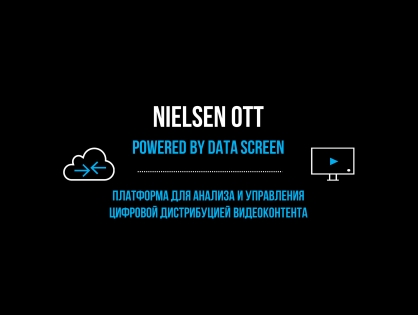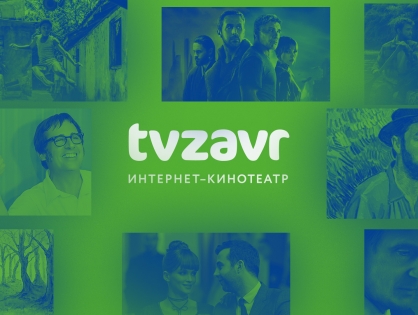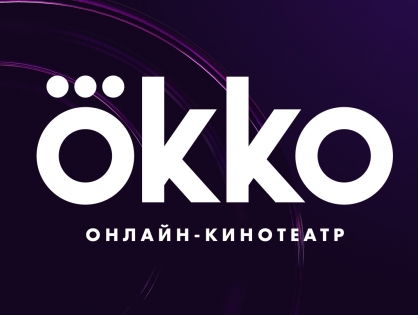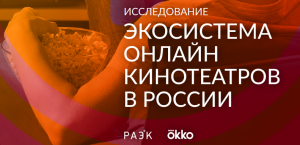 In 2017, Russia together with online cinema OKKO made a study of development of Russian market of online video services from 2010 to 2017 “Ecosystem of online cinemas in Russia 2017”.
In 2017, Russia together with online cinema OKKO made a study of development of Russian market of online video services from 2010 to 2017 “Ecosystem of online cinemas in Russia 2017”.
The purpose of the study was to describe the ecosystem of the online video in Russia, to trace the dynamics of the using of online video from 2010 to 2017, identify the key players in the market system and models of content monetization, to study the audience and the structure of using online video in Russia, to define the place of Russian market of online video in the world video using and the way it impacts on the ecosystem of the digital economy.
Key figures and results of the study
So, according to the results of the study, the volume of the Russian market of online services in 2017 will be 13.64 billion rubles. 70% or 7.83 billion of income in 2016 comes from online cinemas.
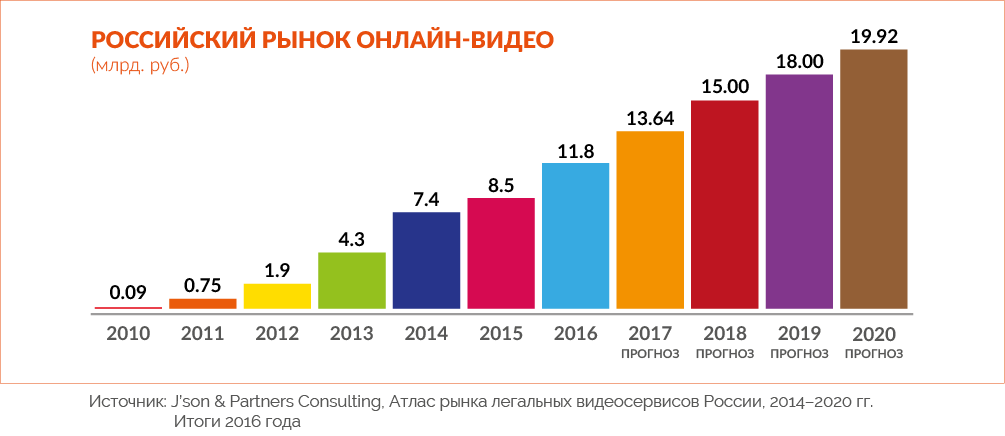
The biggest players in the market up to 2016:
- ivi – 33% of the market
- Okko – 16%
- Megogo – 13%
- Amediateka – 8%
- TVzavr – 5%
The audience for online video in Russia was 69.3 million people or 47% of the population at the end of 2016. Experts also noted an increase of the number of legal online cinemas in Russia. Today, it is 39.6 million people and in 2013 it was 21.7 million people.
Despite the fact that most of the major online cinemas, presented in the Russian market, mainly use monetization through advertising model, most of experts and representatives of online cinemas are seeing an increase of the number of users paying for the content.
For the first quarter of 2017, the number of paying audience was 3 million, and the number of paid transactions for 2016 was 15-20 million. The total payments of users in Russian online cinemas ware 2.34 billion rubles in 2016.
The video services explain the growth of user financing by adaptation to the work in terms of piracy and the increasing popularity of SmartTV.
Smart TV is one of the main platforms to attract a paying audience. According to experts at the end of 2016 the amount of Smart TV in Russia was 13.8 million devices, 69% of which were connected to the Internet. The leader in audience of Smart TV is online cinema Okko: for the total size of the average audience of 1.5 million people audience of Smart TV in Okko is 76,8%.
At the same time the level of illegal watching is still high. According to Ernst&Young, 4.5 million people, or 80% of the daily audience of the long and medium-video, watch movies and TV shows on illegal sites. At the same time, according to ROCIT in 2017, 71% of users are willing to pay for legal content, and 38% are already buying or renting movies or TV shows.
83% of users of online cinemas prefer a free model of content with advertisements, only 3% of users buys a paid subscription. The average price that most of users are willing to pay per unit of content is 50-100 RUB.
Over the past few years digital windows reduced significantly – the time between the premiere of the film in cinemas and on the Internet today is 6 – 8 weeks difference, whereas 5 years ago it was 16 weeks.
The study also made a review of the regulatory framework for online cinemas in Russia.
The study concluded that the market of online video services operating in the legal segment has a significant development potential in the Russian market in the coming years, drivers and limiting factors for the development of online cinemas and the using growth of legal video were also identified.
Drivers:
- The growth of Internet penetration, the development of 3G and LTE networks that allow you to consume online video content comfortably at high speed without interruption
- The development of payment systems that allow you to purchase paid content user-friendly way
- Improved service system, increasing the number of content
- Low quality of pirate services
- The development of new technologies: VR, 4K etc.
- Appearance of new devices suitable for viewing online videos
- The growing popularity of Smart TVs, which already began to rapidly displace usual TVs
- The growth of user involvement in this type of services because of the ability for the user to choose the content of interest, to comment and exchange opinions
- Expanding the geography of service delivery by Russian video services
Limiting factors:
- • Poorly level of digital literacy of users
- • Maintaining of a high level of illegal consumption
- • The relatively high cost of content and services
- • Competition from other types of online entertainment and services (games, social networks, etc.)
- • Excessive regulation
You can read the full text of the study at the link
The presentation of the study will be held at the conference “Runet 2017: results of the year” at the site of the MIA “Russia Today” at Zubovsky Boulevard, 4.

